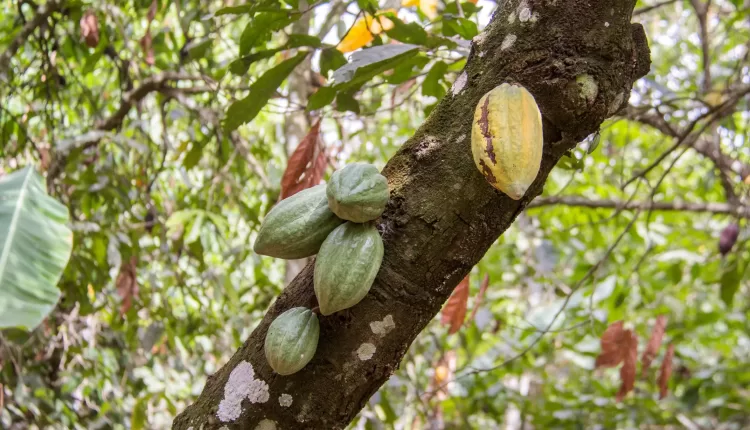Cocoa prices Wednesday posted moderate gains, with NY cocoa climbing to a 1-week high, amid concerns that Ghana, the world’s second-largest cocoa producer, is unlikely to fulfil some of its cocoa contracts for a second season.
Ghana’s cocoa regulator postponed 44,000 MT of cocoa shipments to future seasons due to a lack of supplies.
Ghana’s 2022/23 cocoa crop is now expected at around 650,000 MT, a 13-year low and 24% below initial estimates of 850,000 MT, as a lack of fertilizers and black pod disease hurt cocoa yields.
Strong cocoa demand is underpinning prices. Gepex, an exporter group that includes six of the world’s biggest cocoa grinders, reported last Friday that its Q2 cocoa processing rose +3% y/y to 161,433 MT.
Last Monday, NY cocoa rallied to a 12-year nearest-futures high as the outlook for tighter future cocoa supplies has prompted fund buying of cocoa.
Cocoa supplies have tightened as 2023/24 Ivory Coast forward cocoa sales from Oct 1-July 7 fell -1.3 MMT (-13.3%) y/y, and the Ivory Coast cocoa regulator, Le Conseil Cafe Cacao, said on July 18 that the Ivory Coast is not making further forward sales of cocoa for export in the 2023/24 season.
Cocoa prices have rallied over the past two months due to the recent heavy rain in West Africa that has accelerated the spread of black pod disease, which causes cocoa pods to turn black and rot.
The spread of the disease from the extreme wet weather could result in lower cocoa crop quality and production and push the global cocoa market into a third year of deficit for the 2023/24 season.
Reduced cocoa supplies from the Ivory Coast are bullish for prices after Ivory Coast farmers shipped 2.33 MMT of cocoa from Oct 1-Aug 13, down -2.9% y/y. The Ivory Coast is the world’s largest cocoa producer.
Also, ICE monitored cocoa inventories held in U.S. ports have steadily declined over the past two months to a 4-1/2 month Wednesday.
Cocoa prices have support from concern that an El Nino weather event could undercut global cocoa production.
On June 8, the U.S. Climate Prediction Center said that sea surface temperatures across the equatorial Pacific Ocean had risen 0.5 degrees Celsius above normal, and wind patterns have changed to the point where El Nino criteria have been met.
Cocoa prices rallied to 12-year highs in 2016 after an El Nino weather event caused a drought that hampered global cocoa production.
Smaller cocoa supplies from Nigeria are bullish for cocoa prices after Nigeria’s Jun cocoa exports fell -8.5% y/y to 12,245 tons. Nigeria is the world’s fifth-largest cocoa bean producer.
Signs of strength in global chocolate cocoa demand are supportive of cocoa prices. On July 25, Swiss chocolate maker Lindt & Spruengli AG posted a first-half operating profit above consensus and raised its full-year revenue forecast, signalling strong chocolate demand.
The reopening of the global economy from the pandemic has boosted chocolate demand. According to Nielsen data, for the 52 weeks that ended May 27, dollar sales of chocolate are up about 10% from the year-earlier period.
Also, researcher Euromonitor projects 2023 global chocolate confectionary sales will climb +5.8% this year to nearly $26 billion.
An increase in London cocoa inventories is bearish for prices. Certified cocoa stockpiles held in European port warehouses monitored by the ICE Futures Europe exchange to a record 173,780 MT (data from 2020) on July 12.
The recent surge in cocoa prices is beginning to curb demand. The National Confectioners Association on July 20 reported that North American Q2 cocoa processing fell -12% y/y to 102,493 MT, the lowest for a Q2 in 15 years.
Also, the Cocoa Association of Asia reported that Asia Q2 cocoa grindings fell -6.5% y/y to 213,977 MT. In addition, the European Cocoa Association on July 6 reported that European Q2 cocoa processing fell -5.7% y/y to a 2-year low of 343,283 MT.
Finally, Barry Callebaut, the world’s biggest chocolate maker, reported that its sales volume fell -2.7% in the first nine months of the fiscal year ending May 31 as higher prices hurt sales.
The International Cocoa Organization (ICCO) forecasts a global cocoa deficit for 2022/23 of -146,000 tons.
ICCO said, “The expectation of a supply deficit has been compounded with weather variations, especially in West Africa.”
- Ghana May Postpone Delivery of 250,000 MT of Cocoa Due to Shortage - April 12, 2024
- Ghana Cocoa Farmgate Price To Go Up By 50% - April 4, 2024
- More African Processors Shutdown As Cocoa Shortage Deepens - March 17, 2024
